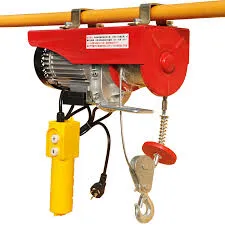Fall protection is a crucial aspect of workplace safety, particularly in industries like construction, manufacturing, and warehousing, where the risk of falling from heights is a constant concern. Proper fall protection not only ensures compliance with occupational safety regulations but also protects workers from potentially life-threatening injuries. For businesses aiming to fortify their safety measures, understanding the different types of fall protection is essential. Here, we delve into the various fall protection systems, highlighting their importance, functionality, and impact on workplace safety.

Personal Fall Arrest Systems (PFAS) are a frontline defense against falls in work environments. These systems typically consist of a body harness, anchorage system, and connecting devices such as lanyards or lifelines. The body harness is a central component, designed to distribute the force of a fall across the wearer's body, reducing injury risk. Effective PFAS usage requires careful consideration of the anchorage point, which must be capable of supporting a minimum load as specified by safety regulations. Industries with elevated workspaces, such as construction and shipbuilding, often rely heavily on PFAS due to their effectiveness and flexibility.
Guardrails,
as a form of passive fall protection, provide an excellent solution for preventing falls in the workplace. Easy to install and maintain, guardrails offer a physical barrier that eliminates the fall hazard altogether. They are especially useful in environments where workers perform tasks near open edges, such as rooftops or scaffolding. The installation of guardrails is a proactive approach that not only keeps workers secure but also minimizes the need for personal protective equipment, thereby enhancing operational efficiency.

Safety Net Systems serve as a catch-all solution for falls, providing an additional layer of security for workers operating at great heights. These nets are strategically installed to absorb the impact of a fall, thereby preventing injuries. Safety nets are particularly beneficial in construction settings, where they offer protection over wide areas like building perimeters or stadium constructions. To maximize their effectiveness, safety nets must be properly installed, inspected regularly, and meet strict safety standards.
types of fall protection
Positioning Systems are designed to hold a worker in place, allowing them to work hands-free at height. These systems are particularly useful when precision work is required in areas like tower maintenance or bridge repair. A typical positioning system includes a body harness and a positioning device, such as rope or cable, that connects to an anchorage point. When properly utilized, positioning systems improve worker productivity by facilitating better movement and control.
Suspension Systems enable workers to descend and ascend vertically while being securely attached to a rope. This type of system is commonly used in activities like window washing or oil rig maintenance. The key to an effective suspension system lies in the use of reliable ropes and harnesses, coupled with rigorous worker training to prevent accidents. Suspension systems not only enhance safety but also allow for greater access to difficult-to-reach areas, thereby expanding operational capabilities.
Rescue and Retrieval Systems play a critical role in emergency scenarios where a worker has fallen and needs immediate retrieval. Essential for confined spaces and hazardous locations, these systems include portable tripods, winches, and retrieval lines that facilitate quick and efficient rescues. Having a well-planned rescue strategy in place, complete with trained personnel and functional equipment, is vital for minimizing downtime and ensuring the health and safety of employees.
Prioritizing fall protection by incorporating these systems into your safety protocol not only mitigates risks but also fosters a culture of safety that is invaluable to any organization. With advancements in technology and safety engineering, organizations now have access to a broad array of fall protection systems tailored to various work environments. By selecting the right type of fall protection, employers can ensure compliance with occupational regulations, protect their workforce, and enhance workplace productivity—a trifecta of benefits that underscores the significance of implementing robust fall safety measures.








